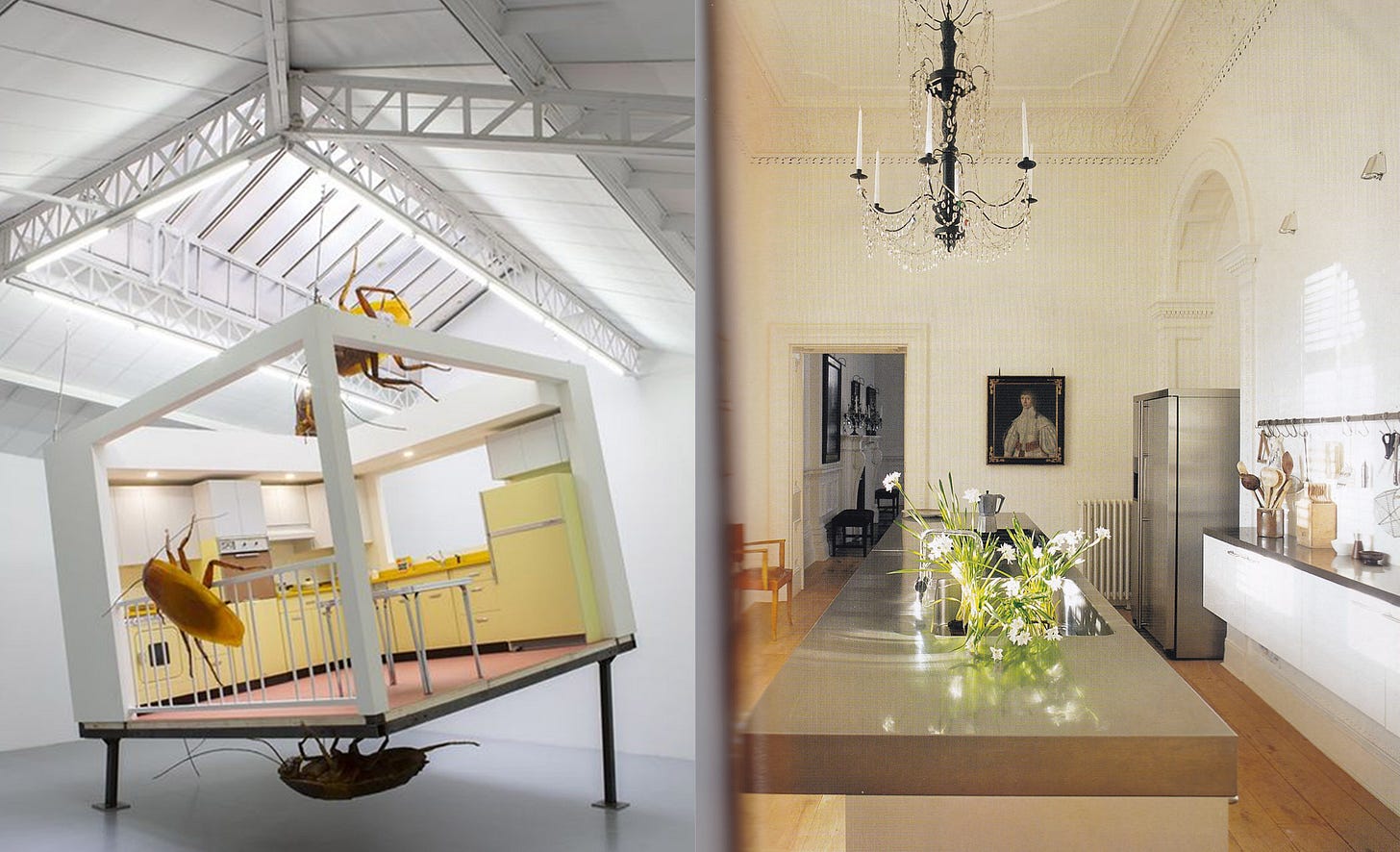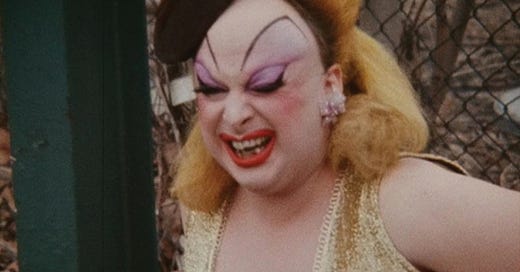Maybelline-moustached John Waters once said that in order ‘to understand bad taste one must have very good taste’. There’s a particular scene in his film Pink Flamingos that he’s most known for. It’s of Babs Johnson, played by Divine, a Baltimore woman who proudly holds the title of ‘the filthiest person alive’. She’s walking down a street wearing sparkling lurex, heels, and a chapeau, when she sees a dog on a walk. She licks her lips, rubs her belly, giggles, and in one single camera shot, ambles over to the crouched defecating canine, picks up the faeces, stairs straight into the camera, places it in her mouth, chews, swallows, and smiles.
Taste. A noun that has similar empty verbiage as other ephemeral je ne sais quoi fluff like ‘cool’ and ‘style’. It’s a chilled green glass bottle of San Pellegrino mineral water that when boiled down to something tangible is fairly arbitrary and meaningless. But like a dog to follow in the heel of its master, taste seems to follow the practice of the Interior everywhere. In reality, most design practices are directly proportionate to their disappearance, but bend and align to epithets of good and bad. Taste is the thermometer, taking the proverbial temperature of the room.
Pre-industrialization, taste was a more homogenous signifier. It sought to display coded elements and aesthetics in order to establish social status, hierarchy, and lineage. That Persian rug on the floor? That would indicate one has status perpetrated through travel and trade routes. A piece of Chippendale furniture? That says you’re educated in Renaissance and Classical history. Dark green wallpaper? You go off hunting as a pastime. Industrialised-era economist Thorstein Veblen later dubbed the term ‘conspicuous consumption’: an item that signified only the degree that it resisted being actually useful, since usefulness was the measure of discretionary wealth. The objet in question might change, but taste is a perpetuating edifice, a house of mirrors.

‘What’s in a name tastemaker? That which we call a rose by any other name would smell just as sweet.” -William Shakespeare.
A century now of the Modernist dogma dancing the tango with design, taste is not necessarily seen as a simple Platonic expression of ideals, but as a blunt weapon of class struggle. It’s the baseball bat of economic antagonism, and all you have to do is look over at the pages of a certain makeup tycoon heir’s New York apartment published in a glossy magazine with Yves Klein’s, Twombly’s, and Rothko’s hung on the wall in direct sunlight while demurely joking that her sons constantly trash the place when playing ball, to feel your eyes roll back far, far into your head.
The Antichrist of chintzy, Le Corbusier, designed a model home for Paris’ International Exhibition of Modern Decorative and Industrial Arts in 1925. Described as a prosaic literalness of a cold storage warehouse cube amongst a sea of lapis lazuli and post-war excess, the dwelling he designed with his cousin, Pierre Jeanneret, was large, geometric, bare, and unfinished. The interior consisted of furniture and finishes that could only be described as the stuff of hardrubbish. A few basic leather club chairs, dining chairs ubiquitously common in Parisian restaurants and tables consisting of slabs of basic timber mounted on tubular steel frames. Arrogantly underwhelming and egalitarian at the time, presently, sounds like the description for another Dover Street Market.

Unsurprisingly for 1925, the installation garnered negative attention, with Le Corbusier accusing the exhibitions’ organizers of erecting a 6-metre wall around it in an effort to conceal it. The contextual drabness of its interior was not symptom of budgetary constraints, nor pour epater les bourgeois – to shock the public, but to demonstrate design as a machine to live in. It was Punk, and the idea of not bad taste but rather no taste, is what defined the Modernist doctrine at first. But on the eventual flipside, to be rudimentary, wholistic, banal, and straightforward was a point of esteem of Modernist design. So in due course, the structures, egos, and signifiers of taste didn’t go anywhere, they simply undressed and revealed themselves (and let’s not forget their designs licensed by elite furniture manufacturers).
"Kill everyone now. Condone first degree murder. Advocate cannibalism. Eat shit. Filth is my politics. Filth is my life." - Babs Johnson
French sociologist, Pierre Bourdieu wrote that taste as a phenomenon should not be understood as an absolute but rather as being socially and culturally determined. In an increased globalized world, multiculturalism has created a diverse cross-pollination of micro taste cultures. Luxury French fashion house Celine’s autumn/winter 2013 collection by Phoebe Philo modelled two-piece sets, dresses, bags and shoes in a textile synonymously associated with laundry-bags and impoverishment. The reaction to those luxury items was an inverse propagation and a proliferation of the original $1 laundry bags and re-usable supermarket bags becoming the hot item to be worn by Melbourne’s glitterati. Just like how ripped linoleum is cool, some mismatched dining chairs, it’s a Dickensian-chic knowing-wink. But Marie Antoinette did little-rich-girl-pretending-to-be-poor better than anyone else when she created the Hameau de la Reine in the 18th Century, a provincial village in the gardens of her own palace for her to cosplay peasantry, while the reign of her and her husband created more famine than ever before. That’s tasty.

Tacky, the paradoxical sibling to taste, had been floating around in the lexicon for a century plus before John Waters grabbed it and ran. It originally developed from equine nomenclature to then an associative slur to people of a low-socio-economic status. Waters though, pioneered it’s associative meanings into medals of esteem. Characters in his film wore their tackiness, debauchery, and filth with pride, riding the wave of their audiences’ appals. It would seem, quelle horreur, that tacky and taste are more similar than not. Both are a sentiment that is in the eye of the beholder, an approving (or disapproving) voyeur assessing what they are seeing from societal codes and structures that we’re all victim to. That scene of Divine eating dog shit? That’s her liberating her audience of the traps and tropes of common dignity and contemporary housekeeping. A celebrated magnus opus from the eyes of Waters’ audience, as such an epic act of filth could never be disassociated from what is tasteful, and what is not.
-Antonia






Yep yep yep